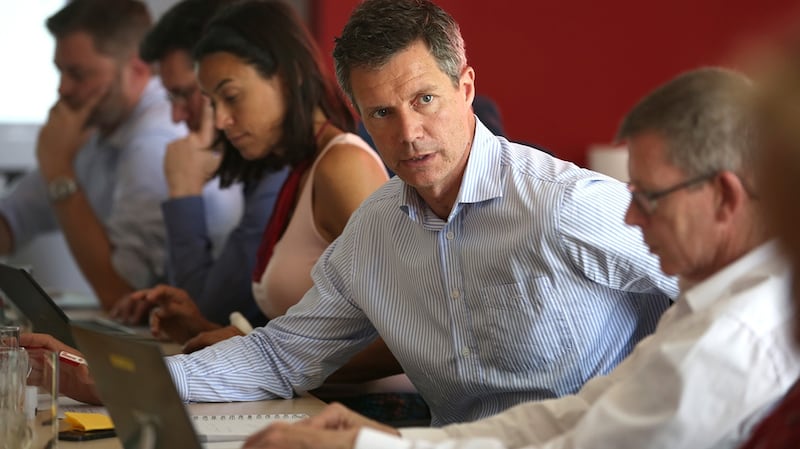It may be unpalatable and not what people want to hear but the reality is we have never seen a pandemic of this scale end in less than two to three years. In fact it’s quite likely that some sections of the world’s population will not be vaccinated for another four years.
Given that extended timeline the importance of keeping transmission levels as low as possible and ensuring people can get on with their everyday lives becomes clear.
If your country was a quick adaptor, your experience of the virus may not actually be that bad. We have seen that in Australia (where I live and work), New Zealand and parts of Asia. In such countries the messaging was good, the population listened and adapted, and there were relatively few deaths. In this scenario the first wave is the worst, mortality rates are low and subsequent waves are smaller and more isolated.
The worst-case scenario is what we saw in the US and the UK in late 2020 and early 2021. Here a country is hit with a massive second wave, very high mortality rates and struggles for some time to get the disease under control. This happened with the so-called Spanish Flu in 1918-19.
Ireland and many other European countries lie somewhere in between, although the impact can vary significantly. This is where a country is hit by waves of equal or similar sizes on a recurring basis. Right now, Ireland is coming out of wave three, is hopefully through the worst of it and looking forward to an improvement in the next couple of months as we head into summer.
I know from family in Cork and Wicklow that this latest wave has been a really tough part of the pandemic, with very high rates of transmission.
But as we head into spring and the rollout of the vaccines to vulnerable and frontline workers gains pace, things should improve. Of course, people need to modify the way they interact and must comply fully with the public health guidelines.
Ireland’s performance
I’ve been tracking Ireland’s performance throughout this crisis, and while I was very impressed with the open communication and structured threat level approach early on, things seemed to drift in early winter.
This was partly due to seasonal change meaning more people moved inside with increased chance of transmission, but also perhaps a drift in attitude and perception of risk, which is disappointing.
I hope we will not see a recurrence of what happened around Christmas, especially when vaccine coverage rises. Looking back, I suppose it was understandable in some ways. People were desperate to break out and get back to normal but wishing a pandemic away doesn’t work.
People in Australia and Ireland were also given messages of hope that “it would be over soon”. That was not ever true, even if politically governments all over the world wanted that to be the impression. So that may have been a problem in Ireland too.

The country that got it right and continues to keep it right is New Zealand, under the strong calm leadership of Jacinda Ardern. From the start it was made clear that everyone was in this together, targets were set and the messaging was clear.
In this regard the traffic-light approach of escalating and de-escalating steps of control played a key role.
Lockdowns and luck
Of course, Australia and New Zealand have had some special reasons to be in an enviable position right now. They are both island countries a long way from anyone (mind you, that is at least half true for Ireland), with strong border controls.
Both adopted and enforced a strict 14-day quarantine regime for visitors early on, as well as quite heavy policing of lockdowns and fines for lack of compliance. Strict lockdowns did make a difference, especially early on as people learned the public health rules of how to combat the virus.
Natural disaster also brought an unexpected benefit. Normally we have thousands of Chinese tourists in Australia in January and February. There is no question this would have introduced the virus in large numbers at the very start of the outbreak. However, due to terrible bushfires in Victoria and New South Wales many did not come during the traditional Chinese holidays. It was an unlikely but welcome outcome of an otherwise awful situation.
That said, there have been issues here too. We have had some upsetting approaches where states have closed borders and treated one other almost as separate countries, while the messaging – good at the start – is now fragmented between eight different states.
The future
Overall, I am optimistic that life as we knew it – well most of it – will return. However, we will still see some small outbreaks and some sections of the world waiting for vaccines until at least 2025. Also, we may see emerging variants that need boosters or re-vaccination.
So it’s a cautious optimism, it won’t be exactly like it was, and some “legacies” will remain.
However, my big fear about the global situation is what happens if powerful countries pursue a two-tier approach, and we end up with the “haves and have nots”. If that happens, countries will be cut off from the rest of the world, poverty will worsen, and they will become places where infected populations develop new variants.
These will then spread back to previously vaccinated, better-off countries to infect them again with resistant strains.
It’s in everyone’s interests that we adopt a “one world” approach and vaccinate everyone as soon as possible.
Dr Ian Norton is a guest speaker at Rotary Ireland's Virtual Conference 2021 on Saturday March 6th. It covers food and sustainability, transgender/inclusion, mental health, finance, disability, climate change and history. You can register here. From Bandon, Co Cork, Dr Norton is founder and managing director of Respond Global, based in Queensland, Australia, and a former head of the World Health Organisation's Emergency Medical Team Initiative in Geneva











